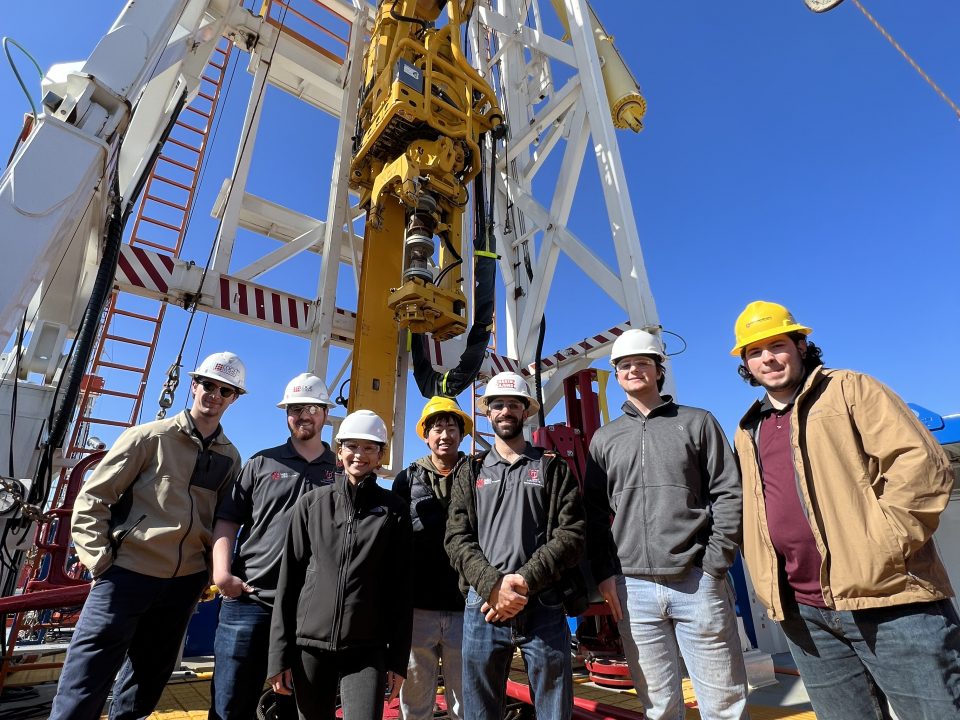Safety Around BOPs
Safety Around BOPs
Safety Around BOPs
Crew members need to remember that blowout prevention equipment is heavy any very unforgiving. Working around BOPs (nippling up or down, ram replacement, etc.) puts workers in a high hazard area. All personnel involved in the operation must be fully alert and knowledgeable in their tasks. All crew members should participate in the Pre-Job Safety meeting. Communications are critical in this operation and all personnel should be aware of the signals to be used.
- Clean the BOP stack then jet and clean the cellar before making changes to the BOP rams.
- When changing rams under the rig floor, make sure the footing is good. The BOP stack should be as clean as possible.
- Be sure the BOP scaffolding is installed and secure.
- Utilize a fall arrest system when working 6 ft’ or more above the deck (ground).
- Before working on the BOP, have the proper tools to work on the equipment.
- Before working on the BOP, be sure the hydraulic fluid pressure is off and the pressure is bled off from the hydraulic lines.
- Be sure the rings and ring flange grooves are clean and are in good condition.
- Be sure that the bolts, nuts and BOP bolt holes are clean and threads are in good condition.
- When handling the hammer to tighten the BOP bolts, keep your gloves clean and as dry as possible.
- Use sash cord (soft rope) or other tool holding line to hold the hammer wrench in proper position to eliminate facial or hand injuries from a glancing blow of the sledge hammer.
- Make sure all lines used for hoisting are in good condition.
- Check out hoisting systems to make sure their brakes and auxiliary equipment are in good condition.
- When hoisting the BOP or any accessory equipment, a flagman should be stationed so that he can see the load and the hoist operator can see the flagman.
- When hoisting, lowering or moving the BOP stack, personnel should stay clear from below the stack.
- Keep hands clear of the BOP flange when setting the BOP in place.
- Once the BOP is set in place, install at least four bolts (on opposite sides of the BOP flange) before removing the hoisting sling.
- Double check all manifold lines to make sure they are connected in the right place.
- Function test the BOP controls and check to ensure that the rams operate correctly.
- Be sure the manual ram lock extensions are installed properly.
- Pressure test the BOP system.
Choke Manifold
The choke manifold is for the purpose of directing the mud to the proper choke during a well kick. It allows alternate paths in case a valve or choke washes out, or allows flow directly to a separator or bypass line.
Becoming familiar with the operation of a choke manifold is a hands-on activity and each crew member should become familiar with the choke manifold system on his rig. There are two things, however, common to all manifolds:
- Gate type manifold valves should be turned back 1/4 to 1/2 turn after they have been turned fully closed or open. Plug valves are pushed full open or full closed.
- Manifolds should be left in a standard operating condition.
Maintenance of a manifold requires inspection to see that the manifold is set in the standard condition for use on the rig. All valves should be operated full open and closed and lubricated if necessary. Care should be taken that there is no pressure on grease fittings when attempting to lubricate the valves. All discharge lines should be securely anchored.




